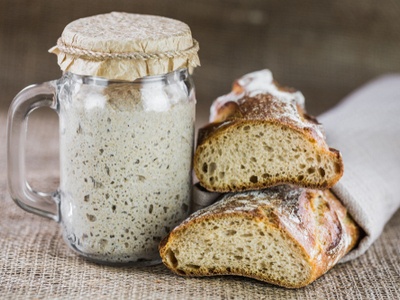If you don’t want to spend your April 1st figuring out ways to trick friends and trying to avoid being tricked, enjoy a piece of crusty sourdough bread while you celebrate National Sour Dough Bread Day. Sour Dough Bread Day is celebrated to honor the history of one of the world’s most basic food staples – bread that is naturally fermented to deliver great taste and nutritional benefits – all for pennies per loaf.
Once you get the hang of using the starter dough you’ll find it quick and easy to make sour dough bread. Join Sloto Cash online casino slots real money Casino as we look at the different ways to celebrate National Sour Dough Day - YUM!
Benefits
There are many health benefits to sour dough bread. Sourdough bread is a low-glycemic food that is good for diabetics because it helps to keep blood sugar levels under control. It contains lactobacilli bacteria which is a prebiotic of “good bacteria” that contributes to gut health.
Many gluten-sensitive people can tolerate sourdough bread because, during the process of preparing the dough, some of the gluten in the flour is broken down which makes it easier to digest. Sourdough isn’t totally gluten free but rather low-gluten so people who have trouble digesting gluten should gl slowly when checking to see whether they can eat sourdough bread.
History
Sour dough bread has a long and illustrious history. Sourdough is the oldest form of leavened bread. 5000-year-old sourdough bread was excavated in Switzerland and remnants of sourdough bread has been found in Egypt and multiple sites in Southeast Asia. Historians believe that sourdough was discovered by accident – probably when bread dough was left out and some type of wild yeast from the air or within the grain itself somehow got mixed into the mix. When people noticed that the resulting bread was lighter and tastier, they started to cultivate the process to make it themselves.
Until the Middle Ages, sourdough was the main form of leavening but barm -- the foam formed on the top of a fermenting liquid, such as the froth that forms on beer -- became more popular. Sourdough returned to favor during the California Gold Rush when Basque miners, who were familiar with sourdough from their homeland in the Pyrenees – introduced it as the simplest and most expedient way of making bread in the wild.
French microbiologist and chemist Louis Pasteur (famous for his discovery of the process of “pasturizing” milk) was fascinated by sourdough bread and studied it, identifying the microorganisms that cause fermentation and give the bread its taste.
Starter
Many people are stymied by the process of making sour dough bread which has led to sour dough bread becoming seen as somewhat of an “artisan” bread. In truth however, making sour dough bread is easy once you have the starter.
Some bakers obtain some starter from someone else (“heirloom” starters are starters that were begun years – sometimes decades – in the past and have been kept active by careful tending) while others make their own starter.
To make a starter you mix flour and water and then add to it every day in order to activate the fermentation process. The mixture of flour and water causes an ecosystem to begin in which the flour’s enzymes split starches into sugars. Bacteria then converts the sugars into acetic and lactic acid and the pH level of the dough declines.
The yeasts eventually convert the sugars into ethanol and carbon dioxide. When you see gas bubbles and smell a fruity fermentation odor, you know that your starter is ready to be used to bake bread.
Bread-Making
Once you have your starter, you’re ready to make easy sourdough bread.
Measure out half of your starter and add a similar amount of flour and again, a similar amount of water. (Don’t forget to replenish the container with flour and water to keep the starter activated). Add salt and mix. The mixture should look like a soupy bowl of oatmeal…..not too watery but not too firm. Let it sit overnight. (If you are gluten free, prepare your dough two days in advance to break down the gluten even further and make it easier for you to digest).
Pour into a bread loaf pan and bake until baked through.
Flours
You can make sour dough bread from different types of flours including white flour, whole wheat flour, spelt flour, rye flour and buckwheat flour.
If you’re just starting out, try a good strong white bread flour. This flour is easiest to handle and, if you are working with a good starter, you should be able to produce a successful loaf of sourdough with an open crumb and a high rise. Once you feel confident with this basic flour you can move on to other types of flour. You can use a starter made with white flour for breads in which you use other flours or you can get/develop a starter with a different type of flour.
Try It
Making sour dough requires some forethought and preparation but today, you can buy sour dough in almost any bakery. Nutritionists like sour dough bread because it’s the least-processed type of bread, contains prebiotics, has more nutrients than regular yeast-breads, is easier to digest than conventional yeast-breads and offers a good way for people to keep their blood sugar in check.
If you haven’t yet tried sour dough bread, April is the time to do so and explore its nutritional benefits, it’s chewy texture and its delicious taste.






